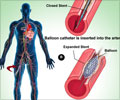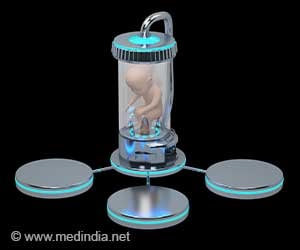
The incidence of drug-eluting stent restenosis (DES-ISR) remains frequent due to the continuous increase in DES implantations. Treatment of in-stent restenosis (ISR) with an additional stent implantation adds another metal layer within the coronary arteries, abolishing the physiologic vasoreactivity of the vessel. Drug-eluting stents significantly reduce the occurrence of restenosis and the subsequent need for repeat vascularization.
Paclitaxel eluting-balloon angioplasty has been shown to be superior to POBA for the treatment of ISR in bare-metal stents (BMS). Whether it is also effective in ISR of different drug-eluting stents has not been extensively studied so far. The PEPCAD DES trial compared the efficacy of the paclitaxel-eluting balloon catheter for treatment of ISR in DES in native coronary arteries to uncoated balloon angioplasty to methodologically assess the efficacy of the balloon mediated drug coating.
This randomized, multicenter, single blinded trial was conducted at six centers and included 110 patients with ISR of DES in multiple stent types. They were divided into two treatment groups: 72 for drug-coated balloon (DCB) angioplasty and 38 for POBA to achieve 90% power. Inclusion criteria were: lesion in native coronary artery, DES restenosis of sirolimus-eluting, everolimus-eluting, or paclitaxel-eluting stents, indication for percutaneous coronary intervention, reference diameter ranging from 2.5 mm to 3.5 mm and a lesion length less or equal to 22 mm. Exclusion criteria were: acute myocardial infarction, chronic total occlusions, lesions in bypass grafts or bifurcations, multiple lesions in the target vessel, left main lesions, ISR in BMS, and/or contraindications for acetylsalicylic acid or clopidogrel.
The length of the balloon in both treatment groups was chosen to overlap the stenotic segment at least 2 mm at the proximal and distal margin. Dual antiplatelet therapy was prescribed for three months in both treatment groups. All patients were scheduled for control angiography at six months. Quantitative coronary analysis was performed in a blinded fashion relative to the treatment groups. The final angiographic follow-up was completed in September 2011.
The primary endpoint was six-month late lumen loss. In the POBA group, late lumen loss was 1.03 ± 0.77; and in the DCB group, late lumen loss was 0.43 ± 0.61. The rate of target lesion revascularization was 36.8% in the POBA group and 15.3% in the DCB group. The rate of major adverse cardiac events (MACE) was 50% in the POBA group and 16.7% in the DCB group.
Advertisement
Advertisement









